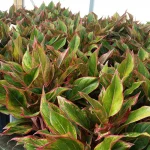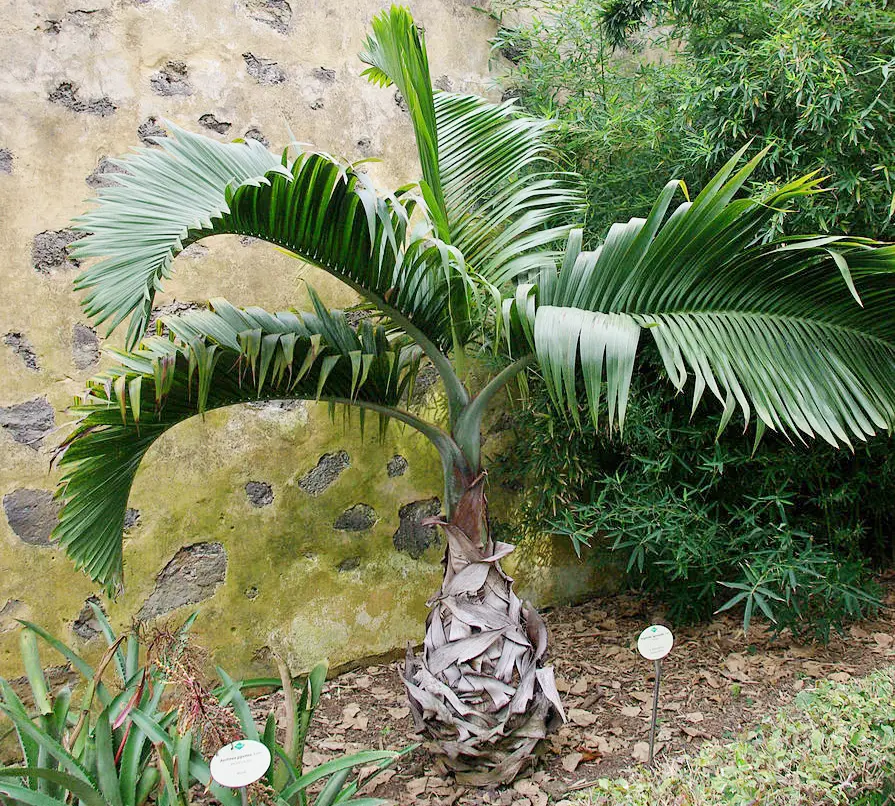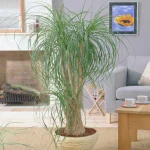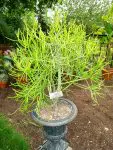This post contains affiliate links. If you buy something from one of our links we may earn a commission. Thanks
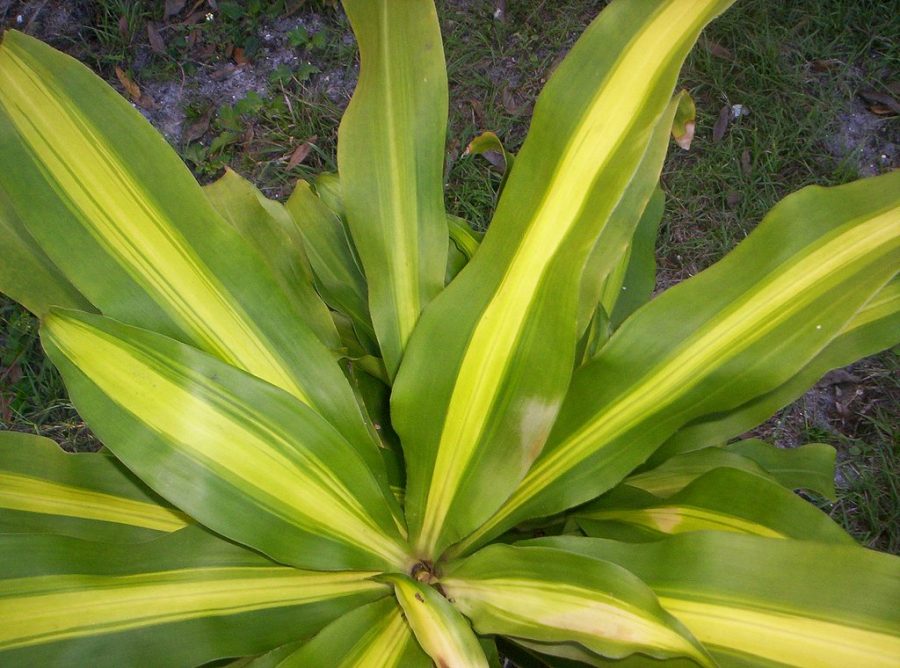
Corn Stalk Dracaena, also known as the corn plant, is a popular indoor plant known for its distinctive, tall stalks and lush, green leaves.
Corn Stalk Dracaena care involves providing bright, indirect light, maintaining a temperature range of 65 to 75°F, watering sparingly when the top inch of soil is dry, and fertilizing every 4-6 weeks during the growing season.
It’s also essential to ensure good drainage through well-draining, porous soil and to keep the humidity level around 40 to 60%. Regular pruning helps to control its size and encourages bushy growth.
Its ease of care and ability to purify the air has made it a staple in homes and offices alike.
While the corn stalk dracaena plant is relatively low maintenance, there are still some specific care requirements to keep it looking its best.
Whether you’re a seasoned plant grower or just starting out, learning about corn stalk dracaena plant care will ensure your plant thrives for years to come.
In this blog post, we’ll explore the ideal conditions for light, temperature, water and humidity, soil and potting, fertilization, pruning and maintenance, and even propagation, giving you all the information you need to keep your corn stalk dracaena plant healthy and happy.
What Is Corn Stalk Dracaena?
Corn Stalk Dracaena, also known as the corn plant, is a species of flowering plant that belongs to the family Asparagaceae.
It is native to tropical Africa, where it grows as a tall, slender tree. Corn plants and dracaena fragrans plants are one and the same and they are also called cornstalk dracaena.
In the home, corn stalk dracaena are often grown as indoor plants, reaching heights of 6 to 10 feet or more. It’s named after its long, narrow leaves that resemble the leaves of corn plants, and its tall, sturdy stalks that resemble corn stalks.
Dracaena fragrans is a slow growing shrub, usually multistemmed at the base, mature specimens reaching 15 m (49 ft) or more tall with a narrow crown of usually slender erect branches. Young plants have a single unbranched stem with a rosette of leaves until the growing tip flowers or is damaged, after which it branches, producing two or more new stems; thereafter, branching increases with subsequent flowering episodes. https://en.wikipedia.org/wiki/Dracaena_fragrans
Benefits Of Having Cornstalk Dracaena In Your Home
Corn Stalk Dracaena has numerous benefits that make it an excellent choice for indoor plant enthusiasts.
Not only do these dracaena plants look great, but it’s also natural air purifiers, removing harmful pollutants from the air such as benzene, formaldehyde, and trichloroethylene.
Additionally, it’s believed to have a calming effect on those who live or work near it, making it a great choice for bedrooms or home offices.
Finally, the plant’s low maintenance needs make it a great choice for busy plant parents or those with a brown thumb.
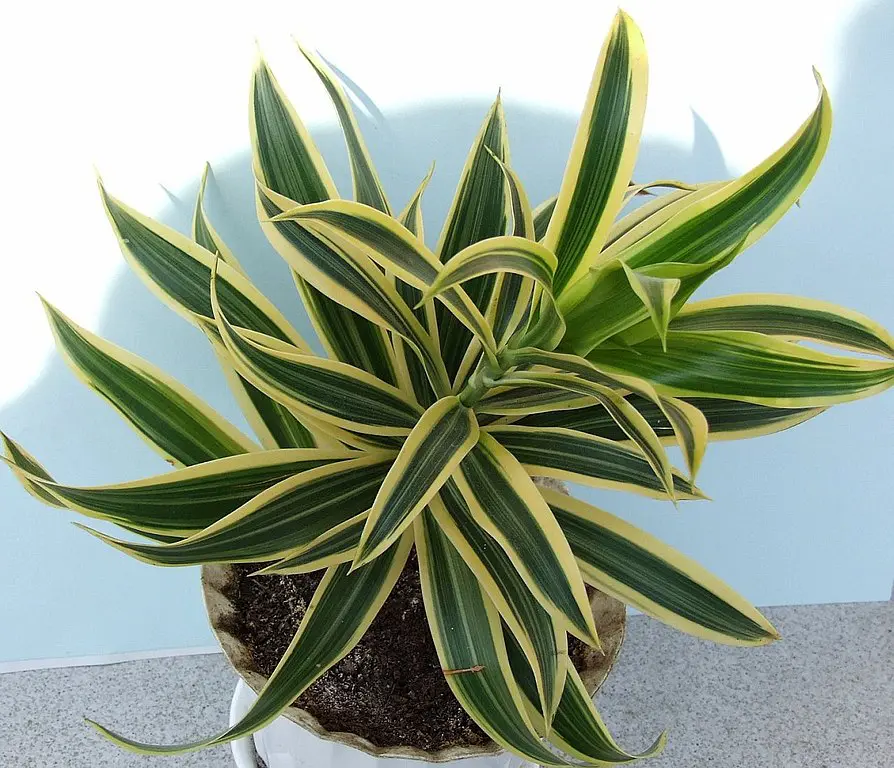
Corn Stalk Dracaena Plant Care Overview
While the corn stalk dracaena is a low-maintenance plant, it still requires some specific care to keep it looking its best.
It needs bright, indirect light and should be kept in a temperature range of 65 to 75°F.
Watering should be done sparingly, and the soil should be allowed to dry out partially between waterings.
The plant prefers high humidity and should be fertilized once a month during the growing season.
Pruning is necessary to control its size, and occasional maintenance may be required to keep it healthy and free from pests and diseases.
With the right care, the corn stalk dracaena is a beautiful and long-lasting addition to any indoor space.
Light and Temperature
Light and temperature play a crucial role in the health and growth of your corn stalk dracaena plant.
Proper lighting is the best way to help the plant maintain its lush green color and keep it from becoming leggy or sparse.
Temperature, on the other hand, affects the plant’s growth rate and overall health.
Understanding the ideal light and temperature conditions for your corn stalk dracaena is an essential aspect of proper plant care.
In this section, we’ll take a closer look at what type of light the plant needs, how to regulate temperature and the effects of extreme temperatures on the plant.
This information will help you keep your corn stalk dracaena looking its best.
Ideal lighting conditions
Amount of light needed: Corn stalk dracaena thrives in bright light. It can tolerate low light conditions, but it may become leggy and have yellowing leaves if not given enough light.
It’s best to place the plant near a window that receives bright indirect sunlight, such as a south or east-facing window.
If you don’t have a suitable window, you can also use fluorescent lights or LED grow lights to provide the plant with adequate light.
Best location in the home: The best location for a corn stalk dracaena plant is near a bright, indirect light source.
Avoid placing it in direct sunlight, as this can cause the leaves to scorch. If you don’t have a suitable window, you can place the plant near a bright artificial light source.
Optimal temperature range
Tolerance for extreme temperatures:
Cornstalk plants are tropical plants and prefer a temperature range of 65 to 75°F.
It can tolerate some fluctuation, but it may become stressed if the temperature drops below 60°F or rises above 80°F for an extended period of time.
Overheating can cause the leaves to yellow and drop, while overcooling can slow down the plant’s growth and cause stunted growth.
To prevent these issues, keep the plant in a temperature-controlled environment and avoid exposing it to sudden temperature changes.
If you must place the plant in an area with fluctuating temperatures, try to acclimate it gradually to the new conditions.
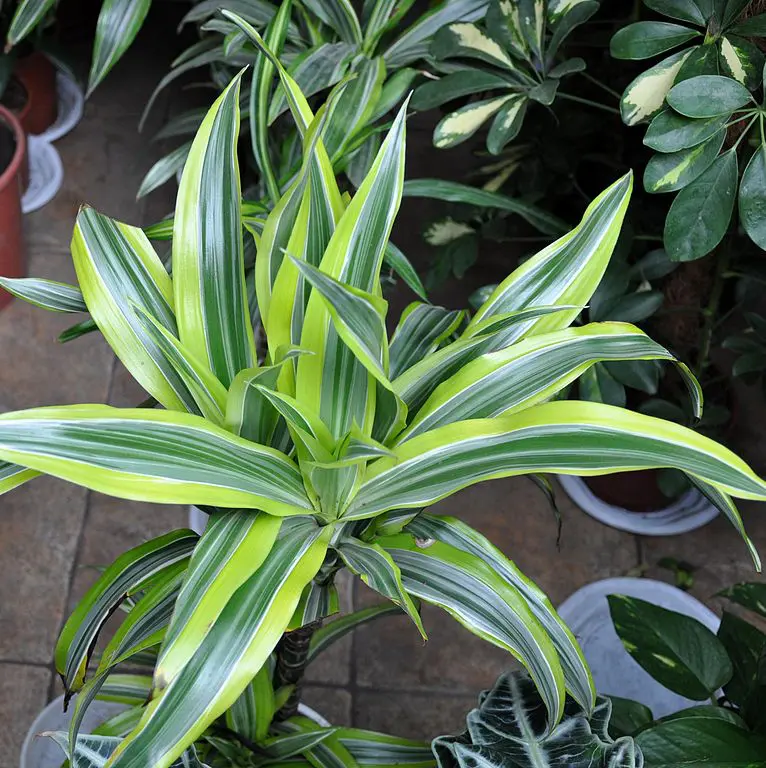
Watering and Humidity
Watering and humidity levels play a critical role in the health and growth of your indoor corn plants.
Proper watering will help the plant thrive and prevent issues such as root rot and yellowing leaves.
Meanwhile, maintaining the right level of humidity is essential for the plant’s well-being and helps prevent spider mites and other pests from infesting the plant.
In this section, we’ll explore the ideal watering schedule for corn stalk dracaena, the best soil to use, and how to maintain the right level of humidity for your plant.
Frequency of watering
Signs of over or underwatering: Cornstalk dracaena should be watered when the top inch of soil is dry to the touch.
Overwatering can cause root rot, while underwatering can cause the leaves to turn yellow and drop.
To determine if the plant needs water, stick your finger into the soil; if it feels dry, it’s time to water.
If there is moist soil in the pot it’s best to wait. If you’re unsure, it’s better to underwater than overwater.
Signs of overwatering include yellowing leaves, mushy stems, and a foul odor.
Signs of underwatering include crispy brown edges on the leaves and a general wilting of the plant.
Don’t water with cold water it can shock the plant. Always use room-temperature water.
Water on the leaves can cause brown spots so keep your leaves dry when watering. Also, inconsistent watering can cause brown tips.
Corn plants can be affected by tap water with a build-up of chlorine and fluoride or other minerals so using distilled water, RO water, or adding a tap filter can be beneficial.
Optimal humidity level
Methods for increasing humidity: Corn plant dracaena prefers a humidity level of 40 to 60%.
You can increase humidity by placing a humidifier near the plant,or placing the plant on a tray filled with moist pebbles.
Consequences of low humidity: Low humidity can cause the leaves to become dry and crispy, and can also attract spider mites and other pests.
To prevent these issues, it’s important to maintain the optimal humidity level for your corn stalk dracaena plant.
If you live in a dry climate or have central heating or air conditioning, you may need to take extra measures to increase humidity for your plant.
Brown leaf tips can be caused by low humidity or overfertilizing.
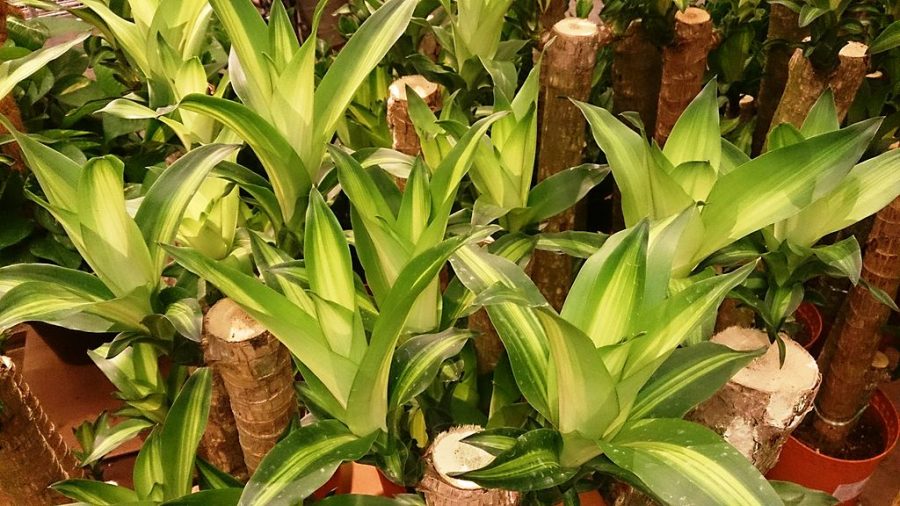
Soil and Potting
Soil and potting are important factors to consider when it comes to corn stalk dracaena plant care.
The right soil will provide good drainage and provide the plant with the necessary nutrients and support its root system.
A suitable pot size will provide the right growing conditions and prevent issues such as root rot.
In this section, we’ll explore the best type of soil to use, the optimal pot size, and how to properly repot your corn stalk dracaena plant.
Type of soil best suited for the plant
Ingredients to look for in potting mix: Cornstalk dracaena prefers a well-draining, porous soil that is rich in organic matter.
Look for a potting mix that contains a blend of peat moss, perlite, and vermiculite, or make your own by mixing equal parts of coco coir and perlite.
Avoid using heavy potting soils, as soggy soil can hold too much moisture and lead to root rot.
Choosing the right pot size
Factors to consider when selecting a pot: The size of the pot should allow for adequate room for the plant’s roots to grow.
It’s also important to choose a pot that has proper drainage holes to prevent water from sitting in the soil.
A pot that is too large will stay wet for too long and could lead to root rot.
Transplanting tips: Corn stalk dracaena should be transplanted when the roots have outgrown the pot.
To transplant, gently remove the plant from its pot and loosen the roots, then place it in a new pot filled with fresh potting mix.
Be sure to water the plant well after transplanting to remove any air pockets from the soil.
Avoid exposing it to direct sunlight for a few days to allow it to acclimate to its new surroundings.
Fertilization
Fertilization is an important part of dracaena corn plant care, as it provides the plant with the essential nutrients it needs to grow and thrive.
Regular fertilization will help maintain the plant’s vibrant green color, encourage new growth, and prevent issues such as yellowing leaves.
In this section, we’ll explore the best type of fertilizer to use, how often to fertilize, and how to properly apply fertilizer to your corn stalk dracaena plant to help you provide the best care for your plant and ensure its continued health and growth.
When to fertilize the plant
Types of fertilizers best suited for Corn Stalk Dracaena: Corn stalk dracaena can be fertilized using a balanced, water-soluble fertilizer. A balanced 20-20-20 fertilizer is a good choice, as it provides the plant with the essential nutrients it needs to grow and thrive.
Organic fertilizers, such as compost or worm castings, can also be used.
Using slow-release fertilizers like fertilizer spikes cab take the guesswork out of when to fertilize.
How much fertilizer to use
Signs of over or under-fertilization: Corn stalk dracaena should be fertilized every 4-6 weeks during the growing season (spring to fall).
The amount of fertilizer to use will depend on the size of the plant. Follow directions and consider starting with half-strength fertilizer.
It’s important not to over-fertilize, as this can lead to leaf burn and other issues. Overfertilization is often indicated by brown or yellow tips on the leaves, or by a noticeable change in the plant’s growth.
If you suspect that you have over-fertilized, stop fertilizing and flush the pot out with water until water runs out the bottom andthe plant has recovered.
On the other hand, under-fertilization is indicated by yellowing leaves or slow growth.
If you suspect that you have under-fertilized, increase the frequency of fertilizing and be sure to use the right amount of fertilizer.
Pruning and Maintenance
Pruning and maintenance are important aspects of corn stalk dracaena plant care, as they help keep the plant healthy and encourage new growth.
Pruning helps to control the plant’s size, remove dead or yellowing leaves, and promote the development of bushier, fuller growth.
In this section, we’ll explore the best time to prune, how to prune correctly, and other important maintenance tasks, such as wiping down the leaves with a damp cloth and removing any debris from the soil.
Trimming the plant to promote growth
Techniques for effective pruning: To promote growth, corn stalk dracaena should be pruned regularly.
This will encourage bushier, fuller growth and control the size of the plant. When pruning, it’s best to remove yellowing or dead leaves, as well as any leaves that are growing too long.
To prune, simply cut the leaves off at the base, using sharp, clean scissors or pruning shears.
Make the cuts just above a node, which is the point where a new leaf will grow. Be sure to disinfect your tools between cuts to prevent the spread of any disease or bacteria.
Prevention and treatment of common pests and diseases
Tips for keeping the plant healthy: To keep your corn stalk dracaena healthy, it’s important to keep the plant clean and free from any debris.
Wiping down the leaves regularly will help remove any dust or dirt, which can attract pests and create conditions that are conducive to disease.
Corn plants are generally trouble-free but they are susceptible to the same common problems as most other plants.
If you notice any pests on your plant, such as spider mites or mealy bugs, it’s best to treat them promptly using a natural, pesticide like insecticidal soap or neem oil.
If you notice any signs of disease, such as yellowing leaves or stunted growth, it’s best to remove the affected leaves and isolate the plant to prevent the spread of the disease.
Regular fertilization and proper watering practices will also help keep your corn stalk dracaena healthy.
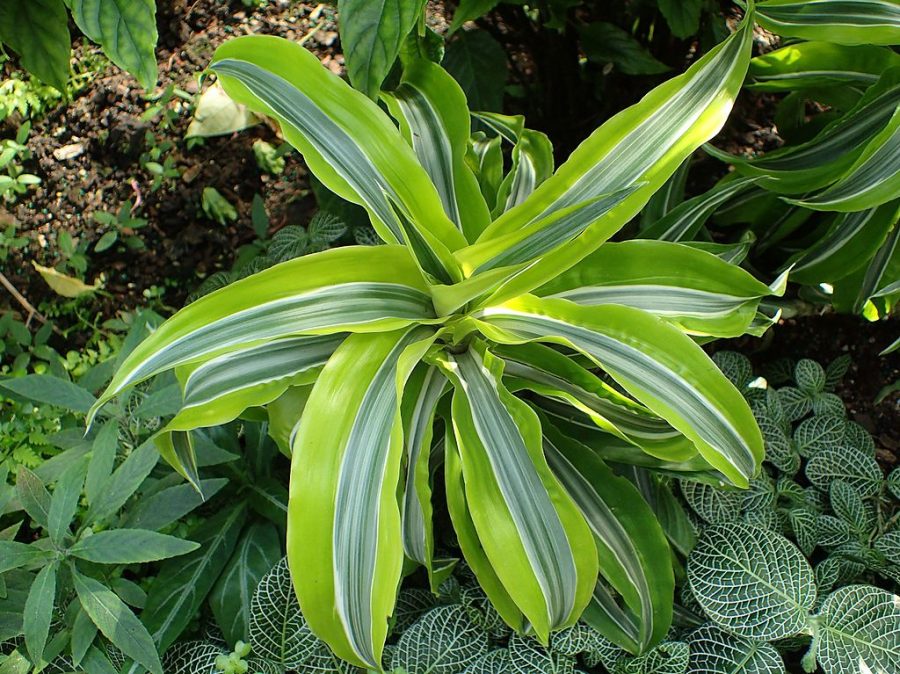
Propagation
Propagating your corn stalk dracaena plant can be a fun and rewarding experience, as it allows you to create new plants from your existing ones.
Whether you’re looking to grow new plants for yourself or to share with friends and family, propagating your corn stalk dracaena is a relatively simple process.
In this section, we’ll cover the steps involved in propagating your corn stalk dracaena, including taking cuttings, rooting the cuttings, and caring for the new plants.
We’ll also touch on some important tips and considerations to keep in mind, such as choosing the right time to propagate and providing the right conditions for growth.
Whether you’re a seasoned plant propagator or just starting out, this information will help you successfully propagate your corn stalk dracaena and bring new life to your plant collection.
Methods of propagating Corn Stalk Dracaena
Stem cuttings: One of the most common and easiest methods of propagating corn stalk dracaena is stem cuttings.
This involves taking a stem cutting from the parent plant and rooting it to create a new plant.
To do this, select a stem that is healthy and free from pests and diseases, and cut it just below a node using sharp, clean scissors or pruning shears.
Division of the plant: Another method of propagating corn stalk dracaena is by division.
This involves separating the parent plant into multiple smaller plants, each with its own roots.
To do this, carefully remove the parent plant from its pot and separate it into smaller sections using a sharp knife, making sure that each section has a good root system.
Steps for successful propagation
Preparation of the cuttings or division of the plant: Before propagating your corn stalk dracaena, it’s important to prepare the cuttings or divisions.
This may involve removing any leaves from the bottom of the stem cutting or removing any old or damaged roots from the plant divisions.
The use of a rooting hormone powder is optional but it may speed up rooting and increase the number of takes.
Proper placement and care of the new plants: After propagating, it’s important to provide the new plants with the right conditions for growth.
This may include providing adequate light, water, and humidity, as well as avoiding extremes of temperature.
It’s also important to monitor the new plants for signs of pests or disease and to take action promptly if any issues arise.
Tips for avoiding common propagation mistakes
Preventing disease and pests in the new plants: To avoid common propagation mistakes, it’s important to keep the new plants clean and free from pests and diseases.
This may involve disinfecting your tools between cuts and avoiding overcrowding the new plants.
Ensuring adequate light and water for the new plants: Another important factor in successful propagation is providing the new plants with adequate light and water.
This may involve choosing the right location for the new plants and monitoring their water needs.
Over or underwatering can both have negative effects on the new plants, so it’s important to strike the right balance.
Corn Stalk Dracaena FAQ
Corn Stalk Dracaena is a wonderful indoor plant that adds a fresh, green touch to your living spaces.
Although it’s relatively low-maintenance, having some specific knowledge about its care can significantly contribute to its growth and longevity.
Here are some frequently asked questions to assist you in understanding and caring for your Corn Stalk Dracaena better.
Q. How often should I water my Corn Stalk Dracaena?
A. Water your Corn Stalk Dracaena sparingly, only when the top inch of the soil feels dry to the touch. Overwatering can lead to root rot, so it’s better to err on the side of underwatering.
Q. What is the best type of soil for Corn Stalk Dracaena?
A. Corn Stalk Dracaena thrives in a well-draining, porous soil rich in organic matter. A blend of peat moss, perlite, and vermiculite or a mix of equal parts coco coir and perlite would be ideal.
Q. How do I propagate Corn Stalk Dracaena?
A. Propagate Corn Stalk Dracaena through stem cuttings or division. For stem cuttings, cut a healthy stem just below a node and root it in soil. For division, separate the parent plant into smaller sections ensuring each has a good root system.
Q. What are the common pests and diseases affecting Corn Stalk Dracaena, and how can I prevent them?
A. Common pests include spider mites and mealybugs, while diseases might manifest as yellowing leaves or stunted growth.
Keep the plant clean, wipe leaves regularly, and use natural pesticides like neem oil or insecticidal soap for pest control.
Proper watering and avoiding plant stress through sudden temperature changes can also help in preventing diseases.
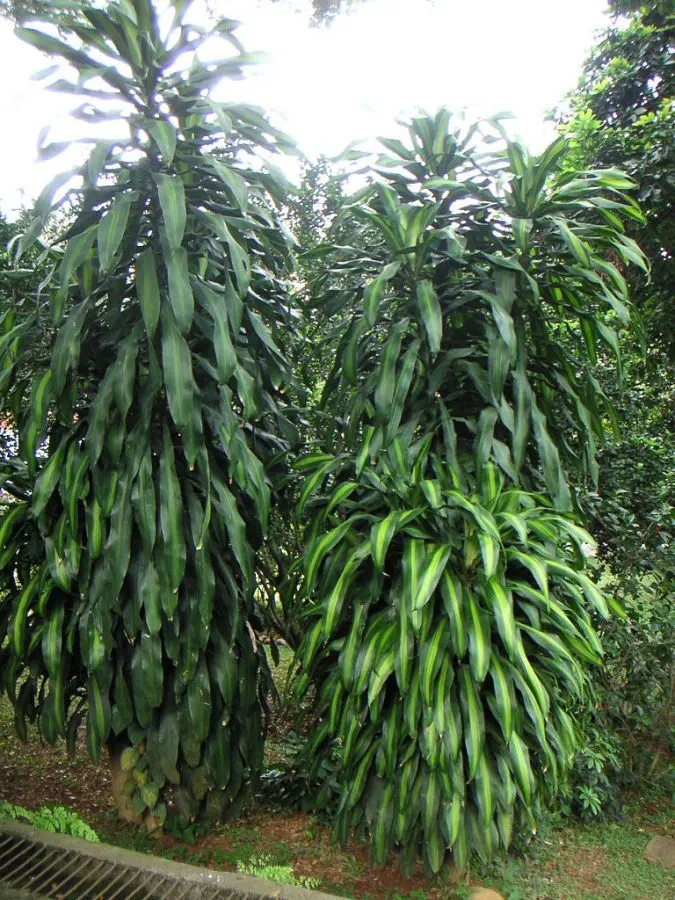
Conclusion
In conclusion, corn stalk dracaena is a beautiful and low-maintenance plant that can add a touch of greenery to any home.
With proper care, including the right lighting and temperature conditions, regular watering, the right soil and potting, proper fertilization, and effective pruning and maintenance, you can enjoy the beauty and benefits of this plant for years to come.
Taking the time to care for your corn stalk dracaena can be a rewarding experience that brings a touch of nature into your home.
So why not give it a try and see what a difference a little green can make in your life?
Corn Stalk Dracaena Plant Care Final Thoughts
In this comprehensive guide to corn stalk dracaena plant care, we covered all the essential aspects of keeping this beautiful plant healthy and thriving in your home.
From the ideal lighting and temperature conditions to the right type of soil and potting, regular watering, and proper fertilization, we covered all the key points you need to know to care for your corn stalk dracaena.
We also explored the benefits of having this plant in your home and the steps you can take to propagate it and expand your collection.
In terms of final thoughts and recommendations, we highly recommend that you keep these tips in mind when caring for your corn stalk dracaena.
Be sure to observe your plant closely and take note of any changes in its appearance or behavior, and adjust your care regimen accordingly.
It’s also a good idea to do your own research and find out what works best for your specific plant, as every plant is different and may have its own unique needs.
Encouragement to share your experiences with the care of Corn Stalk Dracaena with others.
Finally, we encourage you to share your experiences with the care of Corn Stalk Dracaena with others.
Whether it’s through online forums, social media, or simply chatting with friends and family, sharing your knowledge and tips can help others who are also looking to care for this beautiful plant.
Read about the 20 Benefits Of Keeping Indoor Plants For Improved Lifestyle




